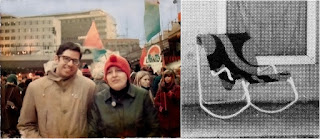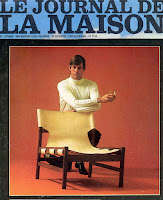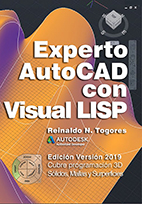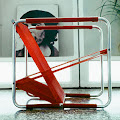The work of a group of young designers in Havana, both Cuban and foreign, has been omitted from all the recent Cuban Design history reviews. Here we recover part of that story.

In 1967 a new ministry was created in Cuba, the Ministry for Light Industry. Our relationship with the Industrial Design begun when me and my wife, Maria Teresa Muñiz Riva were transferred from the Vice Ministry of Housing to the newly created Ministry early in 1968 . This movement resulted from the newly appointed Minister Enrique Escalona's understanding of the importance of design for industrial development. Initially we became part of the Products Development Department, led by Wilfredo Benitez where a group of designers were already working, among them a team led by Iván Espín. Initially we worked in the analysis of the potential impact of design in a wide variety of branches of Light Industry. From those initial moments I keep some photos of our jewelry and toys design proposals.
Our engagement with furniture design followed the creation towards the end of 1968, within the Development Division of the Ministry for Light Industry of a group for the study of the furniture industry's future development. This should be an interdisciplinary group and it was considered that an architect was the right person to coordinate its work as he could have an understanding of all possible aspects of the problem. That responsibility was assigned to me considering my experience in the field of housing since my student days.
The group counted, among others, with Arnaldo Rodriguez a recently graduated economist with experience in research tasks, the industrial engineer Silvia Frias, Suzana Eremie a Romanian specialist in particle and fiber boards and Ismael Lamí an old traditional cabinetmaker, but open to new ideas. Design came later, as then technology and materials issues were currently the most important. Only early in 1970 design solutions were undertaken incorporating Architect Heriberto Duverger to the group. Here also began her training as a designer the very young Aurora Mesa, who later continued her studies with Ivan Espín at the Ministry of Light Industry's School of Industrial Design.Two goals we saw in the design work at this stage:
- checking the suitability of new technologies to solve the immediate furniture issues,
- exploring the range of possibilities new technologies open in the long term.
Meanwhile, María Teresa Muñiz remained in the Products Development Department, where she was in charge of school furniture development. Her work was reflected in three experimental schools: the school for the children of the workers of the Plastic Shoe Factory, the primary school for the Cienfuegos Fishermen Cooperative and the Birán Elementary Boarding School.
In addition to the designs that came into production, she collaborated with other of the ministry's research groups, including the one concerning the proposal for the production of plastic furniture for nurseries.
When, late in 1970, Minister Escalona was replaced, our Furniture Industry Development Group disappears once its recommendations were submitted to the agencies concerned, we were asked to carry out a series of prototypes to demonstrate the proposed principles. Our goals then were:
- development of furniture production using as particle board made from sugar cane bagasse as raw material and manufactured in high productivity automated lines,
- conceiving furniture as a system of standardized modular elements with multiple combination possibilities,
- using furniture as an element to divide and articulate the house's interior space, replacing the heavy and costly concrete "large panels" then used.

For this task a design team was created in the facilities that for prototypes production the State Furniture Enterprise had by the Almendares River. This team was composed by Industrial Designer Maria Teresa Muñiz Riva, which came from the Ministry of Light Industry's Department for Products Development, and Architects Heriberto Duverger and myself.
So was it that we developed a series of designs where the possibilities of various technologies -both available and projected- were explored. Among them:
- Seating in which plastic cordage was employed for seat and backrest surfaces.
- Plywood furniture with slotting joints designed for self-assembly and flat-pack distribution.
- Metallic structure furniture with textile, plywood or particle board surfaces.
- Particleboard storage furniture designed for self-assembly and flat-pack distribution.
This task extended itself for a period of two years, during which a multitude of designs were developed as a way to put forward our ideas and a series of actions to divulge them were performed. Worth mentioning are:
- furnishings for three experimental schools,
- furnishings for an experimental housing module built in the town of Wajay under the direction of Arch. Fernando Salinas,
- MUEBLEPARED, an exhibition where the principles that we were proposing were exposed.
- collaboration with institutions such as the "Experimental Design Workshop" contributing with our prototypes for some of their activities.

Like so many other initiatives, it all remained as proposals, plans and prototypes. Except for the three experimental schools mentioned above, nothing came out of our effort. The state industry has been unable to meet the expectations we then had. Moreover, the official historiography has ignored the pioneering works that were undertaken through the Ministry of Light Industry during its initial years, under the direction of Minister Enrique Escalona.

To the right, one of Eva's Cuban designs.
The only information about the design team that within the Products Development Department was headed by Ivan Espín with the architects Eva Björklund and Manuel Miyar as well as Textiles Designer Yule Amado is Eva's article Möbler för Kubaner published in the Swedish FORM Magazine in 1969.
Names of other designers who worked there as Vico, Bérriz or Puig are also missing. And except for an article about in the experimental schools which appeared in the Arquitectura/Cuba Magazine, our work has been equally ignored.
These pioneering initiatives due to Enrique Escalona's interest in a high quality industrial production, including the Ministry of Light Industry's Industrial and Informational Design School, disappeared when he was replaced as head of the Ministry.
Official bodies chose to favor the production of luxury furniture, using mahogany and other precious woods combined with natural leather, that were used in special furnishings and intended for export, setting up a store in Paris which marketed designs by Gonzalo Córdova and Maria Victoria Caignet.

Devoid of official support our work then had no chance of survival. Thus ended a stage in our professional lives. The state run industry found no use for our design proposals. There was no choice for all of us but to return to the Ministry of Construction where the upcoming school construction plan seemed to promise new opportunities.
Cuban luxury furniture publicity for the European market. Le Journal de La Maison, Pais, 1969.











